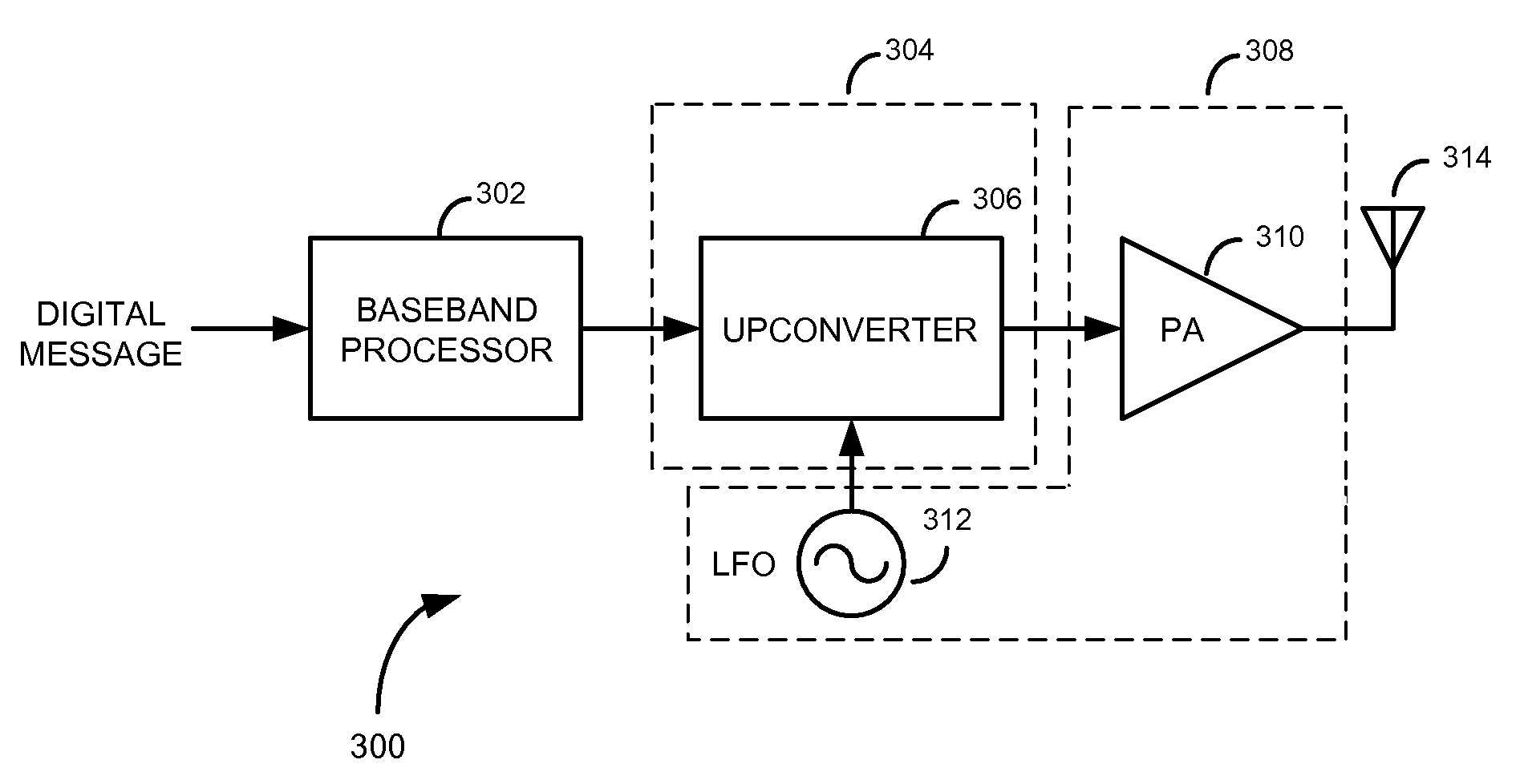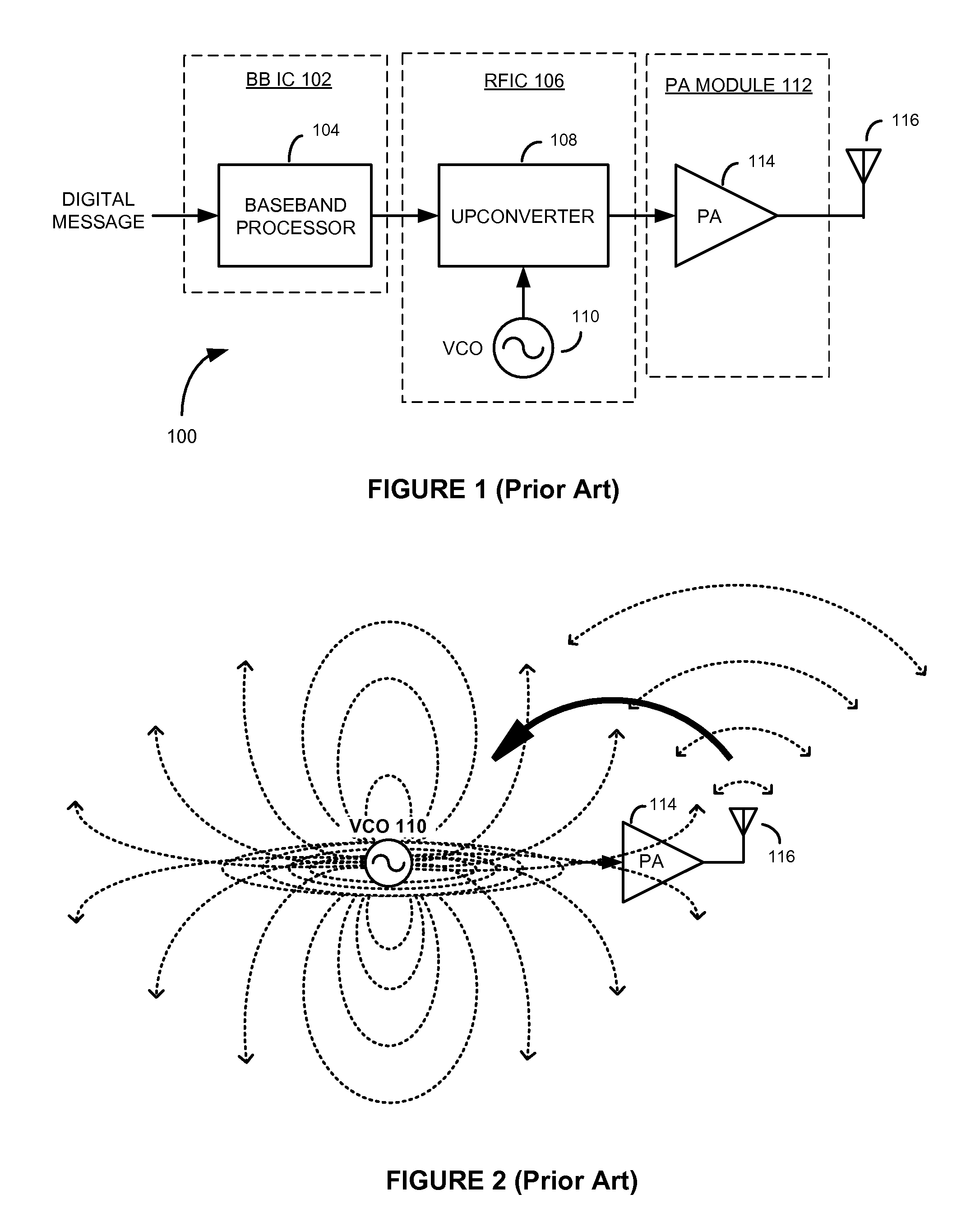Methods and apparatus for reducing radiated field feedback in radio frequency transmitters
a radio frequency transmitter and radiated field technology, applied in the field of wireless communication, can solve the problems of unstable or inoperable vco 110, more prone to process-related failures, unstable or inoperable vco, etc., and achieve the effect of reducing radiated field feedback and substantially avoiding radiated field feedback from pa to lfo
- Summary
- Abstract
- Description
- Claims
- Application Information
AI Technical Summary
Benefits of technology
Problems solved by technology
Method used
Image
Examples
Embodiment Construction
[0024]FIG. 3 is a block diagram of a radio frequency (RF) transmitter 300, according to an embodiment of the present invention. The RF transmitter 300 comprises a baseband processor 302, an RF integrated circuit (RFIC) 304 having an upconverter 306, a power amplifier (PA) module 308 having a PA 310 that is co-located with a low-field oscillator (LFO) 312, and an antenna 314. The baseband processor 302 is configured to receive a digital message and modulate the digital message according to any one of a number of baseband modulation schemes (e.g., Gaussian Minimum Shift Keying (GMSK), quadrature or 3π / 8 8-phase shift keying (8-PSK), or some other modulation scheme), thereby generating digital baseband signals. A digital-to-analog converter (DAC), which may be configured within either the baseband processor 302 or the RFIC 304, converts the baseband signals to analog signals. These analog signals are then upconverted to RF by the upconverter 306, according to a carrier frequency provid...
PUM
 Login to View More
Login to View More Abstract
Description
Claims
Application Information
 Login to View More
Login to View More - R&D
- Intellectual Property
- Life Sciences
- Materials
- Tech Scout
- Unparalleled Data Quality
- Higher Quality Content
- 60% Fewer Hallucinations
Browse by: Latest US Patents, China's latest patents, Technical Efficacy Thesaurus, Application Domain, Technology Topic, Popular Technical Reports.
© 2025 PatSnap. All rights reserved.Legal|Privacy policy|Modern Slavery Act Transparency Statement|Sitemap|About US| Contact US: help@patsnap.com



